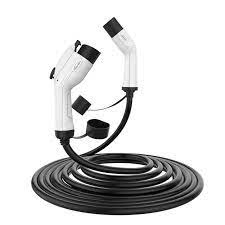Smart Solar Inverter Technology
Solar energy, the third-largest renewable energy source after hydropower and wind, has emerged as a clean, sustainable, and powerful alternative to fossil fuels. The sunlight striking the Earth is more than 10,000 times the world’s total energy use, and technologies to harvest as much solar energy as possible are surging rapidly. Since the first commercial silicon (Si) solar panels created by Bell Laboratories in 1954, the most common technologies today use different forms of Si-based solar cells and convert up to 20% of the sunlight to electricity.
According to IEA’s market analysis, the generation of solar photovoltaics (PV) — the process of converting sunlight into electricity — has reached 720 TWh in 2019 from 585 TWh in 2018 and is expected to grow up to 1,940 TWh by 2025. The current maximum global capacity of solar energy is 592 GW, contributing 2.2% to global electricity generation.
A typical solar cell consists of semiconducting materials such as p- and n-type silicon with a layered p-n junction connected to an external circuit. Sunlight illumination on the panels causes electron ejection from silicon. The ejected electrons under an internal electric field create a flow through the p-n junction and the external circuit, resulting in a current (electricity). With a swiftly growing market and the development of creative applications, R&D on innovative solar energy materials is at its peak to achieve maximum solar-to-electricity efficiency at low cost. Three types of highly investigated semiconducting materials of today are crystalline Si, thin films, and the next-generation perovskite solar cells (PSCs).
The National Renewable Energy Laboratory (NREL) is driving the development of high-efficiency crystalline PVs, which includes III-V multijunction materials (with target efficiency of >30%) and hybrid tandem III-V/Si solar cells. Their six-junction III-V solar cells have reached an efficiency of 47.1% under concentrated light. Moreover, Si-based bifacial technology can harvest solar energy from both sides of the panel, with 11% more efficiency compared to standard panels.
Perovskite Solar Cells
Among the next-generation solar cells, hybrid metal halide perovskite solar cells (PSCs) have garnered a great amount of attention due to their low price, thinner design, low-temperature processing, and excellent light absorption properties (good performance under low and diffuse light). PSCs can be flexible, lightweight, and semitransparent. Notably, perovskite thin films can also be printed, leading to scalable high-throughput manufacturing, and a recent roll-to-roll printed PSC has reached 12.2% efficiency, the highest among printed PSCs.
Notably, combined perovskite and Si-PV materials have shown a record efficiency of up to 28% under laboratory conditions, as demonstrated by Oxford PV. While stability and durability have remained a major concern, a recent low-cost polymer-glass stack encapsulation system has enabled PSCs to withstand standard operating conditions. Although PSCs are still not commercialized, they hold significant economic and efficiency advantages to drive the future of the solar energy market.
Another recent development is the designing of prototypes of thermoradiative PV devices, or reverse solar panels, that can generate electricity at night by utilizing the heat irradiated from the panels to the optically coupled deep space, which serves as a heat sink.
With the rapid development of low-cost, high-performance semiconducting materials, space-saving thin films, and easily installable technologies, the solar energy market is expected to boom in the next five years. Despite the setback caused by the pandemic, the anticipated cost reduction of 15% to 35% by 2024 for solar installations is encouraging and could make this renewable energy more affordable.



